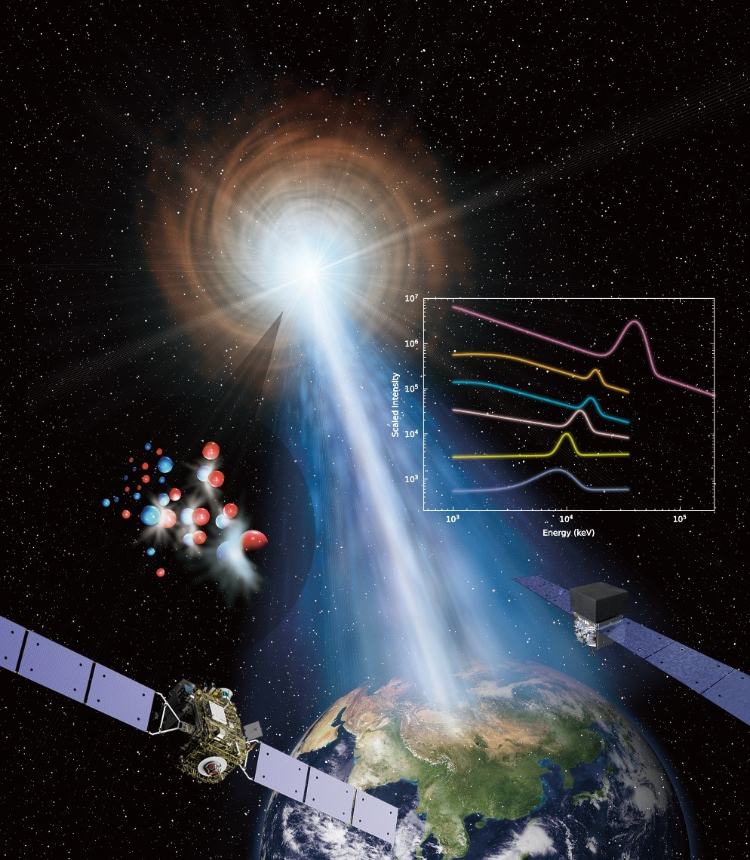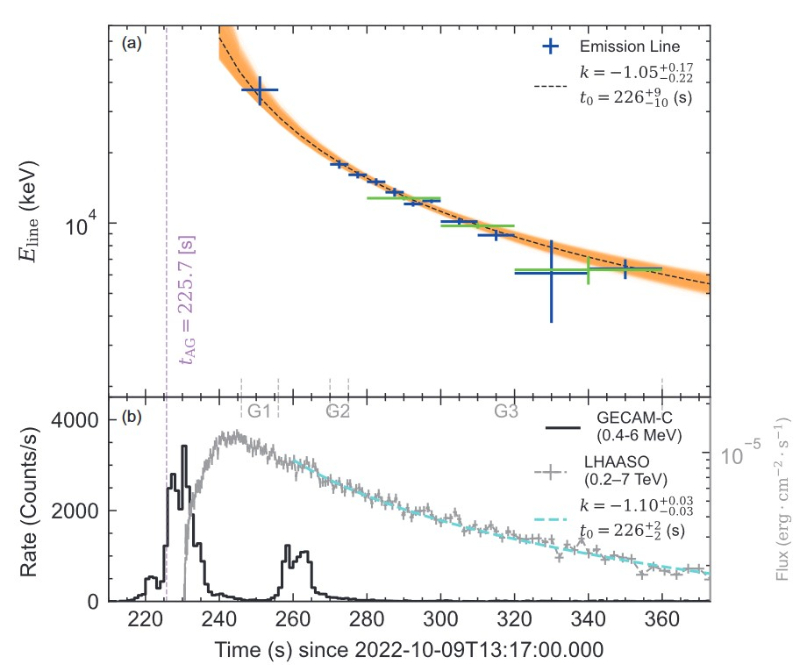
Illustration of the observation of the brightest ever gamma-ray burst (GRB 221009A) by GECAM-C and Fermi/GBM, leading to the discovery of gamma-ray line up to 37 MeV. This work was published as a cover story in Science China Physics, Mechanics & Astronomy.
Chinese scientists from the Institute of High Energy Physics (IHEP) of the Chinese Academy of Sciences (CAS) reported on Thursday their discovery of a gamma-ray line with an energy of up to 37 million electron-volts from an extremely bright gamma-ray burst. This represents the highest energy spectral line feature ever emitted by celestial objects in the universe, according to information from the IHEP shared with the Global Times.
The scientists also found that the gamma-ray line evolves according to a power-law function over time, providing crucial clues to unraveling the mystery of the line.
Their paper was published as a cover story in Science China Physics, Mechanics & Astronomy on Thursday.
"These findings provide new and important clues for unraveling the mysteries of gamma-ray bursts and relativistic jets, marking a milestone in the study of gamma-ray bursts," corresponding author of the paper Xiong Shaolin told the Global Times.
Gamma-ray bursts (GRBs) are the most energetic explosion phenomena in the universe, which can be produced by either the core collapse of a massive star or the collision of two compact stars, such as neutron stars and black holes.
The abovementioned discoveries of the Chinese scientists were made on the so-called brightest of all time GRB, named GRB 221009A, which belongs to the former category and arrived on Earth on October 9, 2022, and was observed by many telescopes all over the world, according to the IHEP.
Researchers from the IHEP of CAS, the Yunnan observatories of CAS, Hebei Normal University, and Guizhou Normal University have formed a collaboration team and executed a comprehensive analysis of the observation data from two space gamma-ray monitors named GECAM-C and Fermi/GBM. The CAS-funded GECAM-C provided an accurate measurement of the low energy band spectrum of this GRB, while the Fermi/GBM covered the high energy band where the gamma-ray line showed up.

The top panel shows the power-law evolution of the energy of gamma-ray line in GRB 221009A, while the prompt emission and afterglow are plotted in the bottom panel.
In particular, this burst is so bright (too many gamma-ray photons in a short period of time) that the Fermi/GBM detector suffered data loss during the bright part of the burst, making reliable data analysis very difficult. GECAM-C did not experience such a problem thanks to its dedicated design of the instrument; thus, the GECAM-C data was used to correct the Fermi/GBM data, the IHEP noted.
After the very challenging analyses of the data issues, instrumental effects, and background modeling, the research group managed to derive the reliable spectra of the GRB and further identify a series of gamma-ray lines throughout the burst, including the surprising gamma-ray line with energy up to 37 million electron-volts detected during the bright part of the burst. Interestingly, they found the line energy varies as a power-law function of time, while the ratio of the line width to line energy remains almost constant. Such features provide solid proof of the reality and the GRB origin of these gamma-ray lines. These discoveries shed a new and unique light on the physics of GRBs and their relativistic jets, according to the IHEP.



